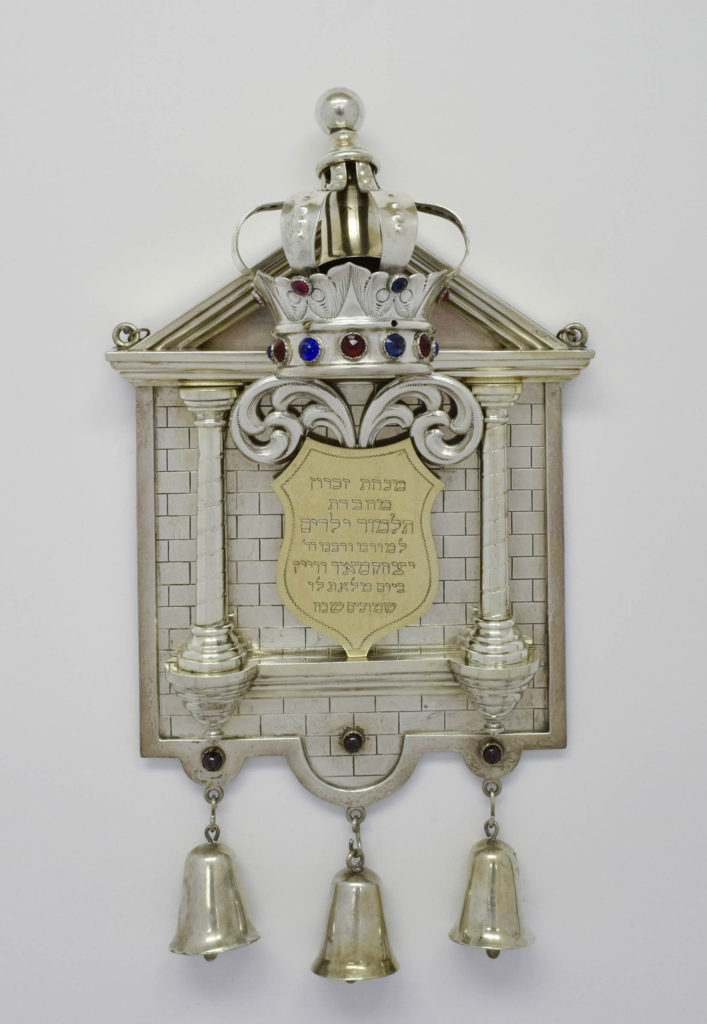Tas (Torah Breastplate)
Tas (Torah Breastplate)
Andrew Messmer
Cincinnati, 1899
Silver and semiprecious stones, h. 10 ½ x w. 6 ¼ in.
Cincinnati Skirball Museum, gift of the Society of Talmud, 7.4
The use of a tas, or breastplate, began in the sixteenth century when many synagogues had more than one Torah scroll, and an interchangeable panel on the breastplate indicated to which portion the Torah was rolled. Later, some breastplates became more ornamental and decorative than functional. Imagery is often symbolic of the Temple of biblical times. On this example, twisted columns recall the architecture of the biblical Temple in Jerusalem, and the crown signifies the Torah, the crown of the law. Bells attached to the bottom edge of the breastplate refer to the robes of the high priests as described in the book of Exodus: “on its hem make pomegranates with bells of gold between them round about” (28:34). This breastplate was a gift to Rabbi Isaac Mayer Wise (1819-1900), renowned leader of Reform Judaism in America, by his students in honor of his 80th birthday. Wise immigrated to the United States from Bohemia, and he served as a rabbi in Albany, New York before coming to Cincinnati, Ohio, where he made an indelible impact on the community and on Reform Judaism throughout the United States. He created the Central Conference of American Rabbis, founded the Union of American Hebrew Congregations (now the Union for Reform Judaism), and established Hebrew Union College in Cincinnati in 1875. He also started a day school in Cincinnati called Talmud Yeladim. The Hebrew inscription on the breastplate reads: “Commemorative gift from the Society Talmud Yeladim to our teacher and rabbi, Dr. Isaac Mayer Wise on his 80th birthday, 1899.”
Andrew Messmer is listed in the 1886 publication Leading Manufacturers and Merchants of Cincinnati and Environs: The Great Railroad Centre of the South and Southwest as a manufacturer of ornamental metal work, gold, and silver plate at 61 Coleman Street. His business was established in 1880 and employed 30 experienced workmen. The listing reads “Mr. Messmer gives special attention to the manufacture of all kinds of new church ornaments.”
Publications:
Artistic Expressions of Faith in Judaism, Christianity, and Islam, ed. Abby S. Schwartz, 1997, p. 4.

